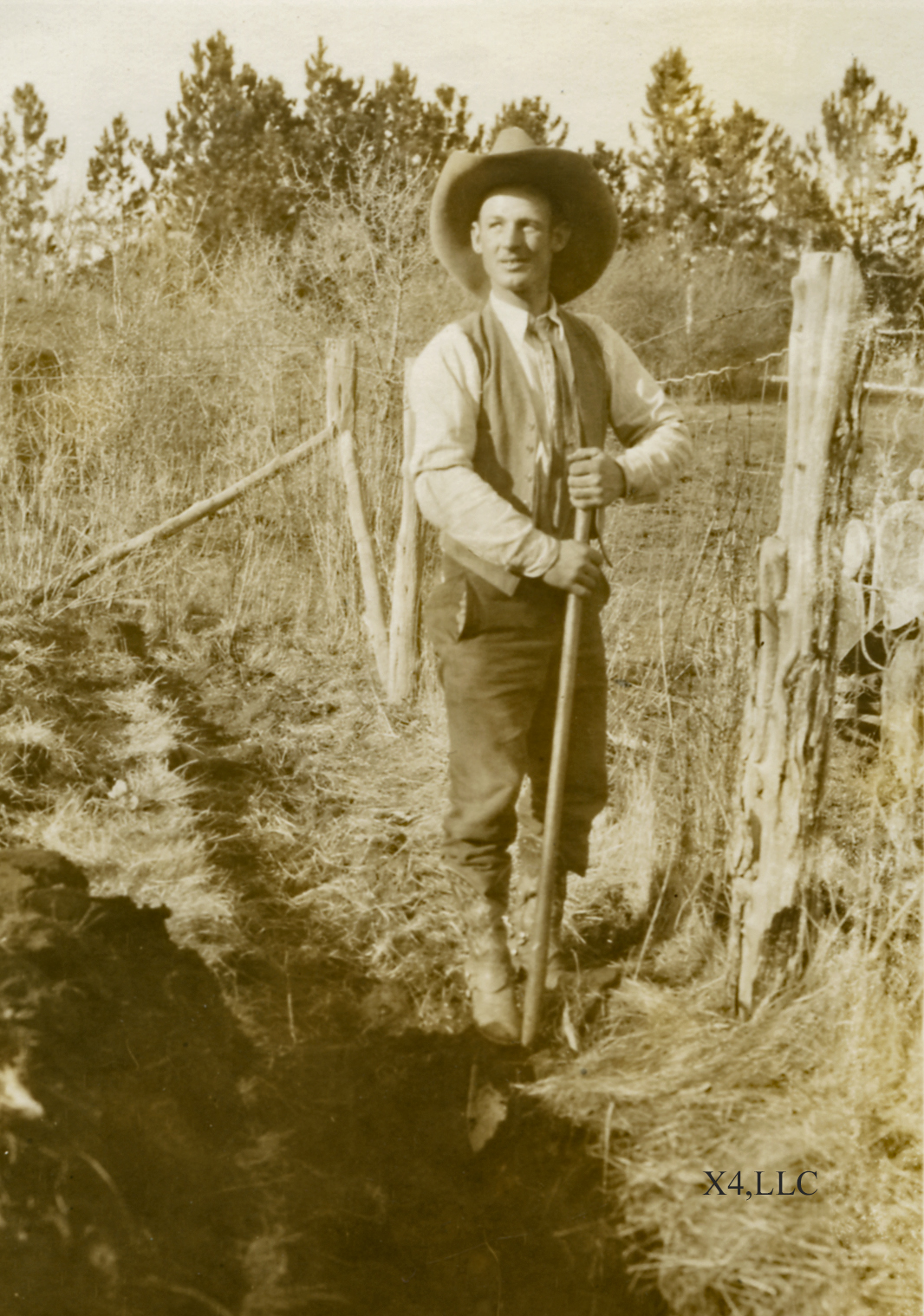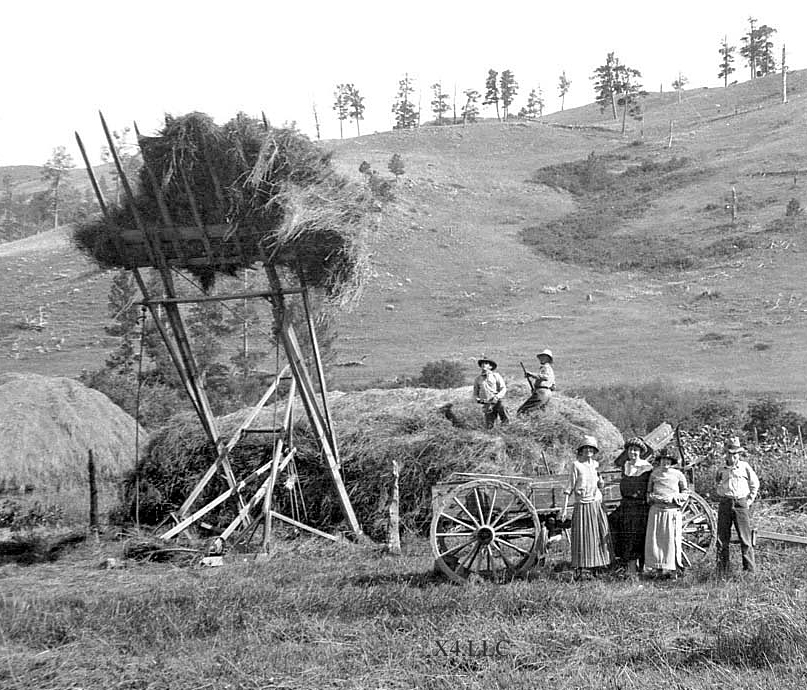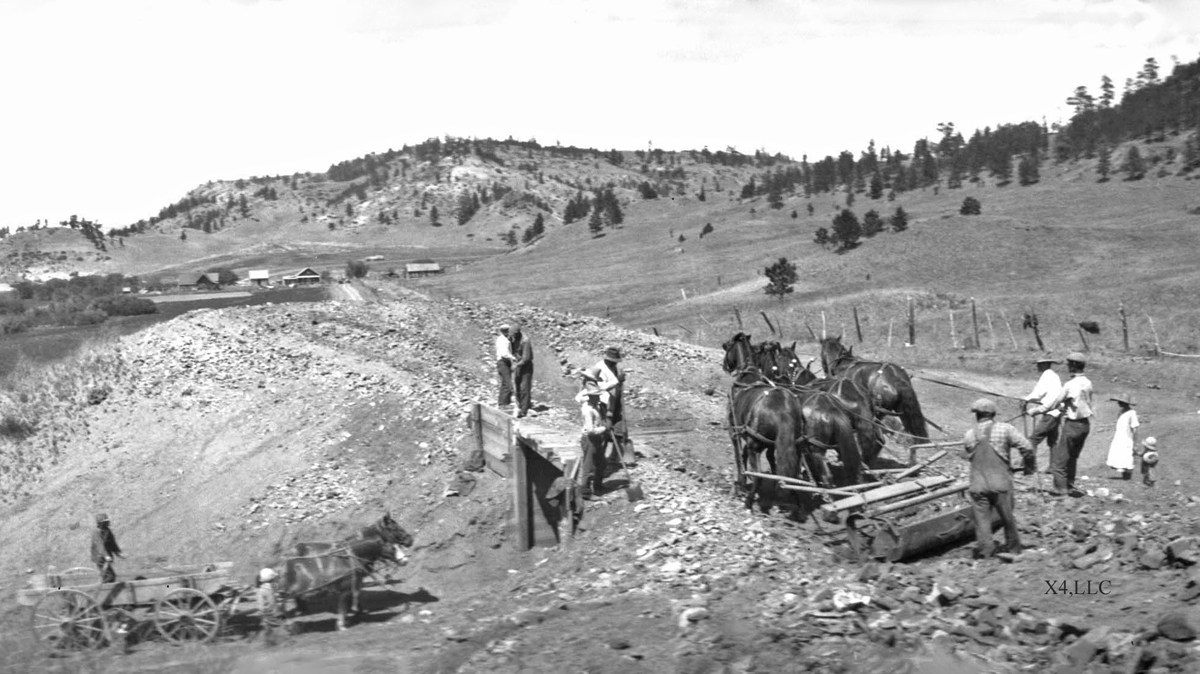Digging Post Holes and Stretching Wire
Digging Post Holes and Stretching Wire
A cowboy’s daily routine in the 1920s looked quite
different from the 1880s and 1890s open-range experience.
No longer did he just gather cattle, rope and brand calves,
then break the rowdy horses. This new breed of ranch-hand
built fences, practiced basic veterinary science,developed
springs, dug reservoirs, planted vegetable gardens,put up
hay, and was the on-site mechanic to reapers, threshers
and cars, followed by trucks and tractors. The benefits for
all this varied work were steady year-round employment, three
square meals a day, and a bunkhouse to reside in.
Today there are two or three roundups per year, but cattle
roundups during the early 1920’s frequently lasted from summer
into fall. This was a time of great transition for the ranchers
in SE Montana. It had become clear that running cattle over great
expanses of rangeland was not economical. Cattle left on open
range often died in the hard winters. As the Crow and Cheyenne
Reservation lands were allotted to the native peoples and fenced,
smaller and more economical ranches began to appear. Too protect
their cattle, horses and sheep, ranchers needed to plow those valley
meadows and raise hay to feed the livestock through winter. With
summer pastures and meadows fenced, it was easier to manage their
herds. Time was allotted for building and fixing the extensive fences,
monitoring the springs for water, harvesting the hay--and yes,
tending the vegetable garden. The modern cowboy was a man of many
talents.

Dave Whaley digging the garden at the X4 Ranch.
Will and his crew plowed and fenced the wild grass flats for hay
meadows. A reservoir was developed upstream on Indian Creek for the
cattle and extra water for the ranch, plus ice in the winter for the
ice house. A coal deposit west of the house provided fuel to keep the
house and bunk house warm. (I don’t think digging coal had been on
their ranch hand’s resumes.)

The hay crew at the X4 Ranch, July, 1923
With the advent of cars getting to town for supplies and gathering
hands for branding became easier as well as a time saver. However,
Montana’s 1919 county roads were bare dirt tracks. They were rarely
graded and often completed with farm implements. Rain and snow
frequently made the roads impassable. Nonetheless, when there was a
dance at the Kirby store, cars were lined up out front instead of
horses tied to a hitching rack. The West would never be the same
and neither would the cowboy life. Will purchased a Fresno Tumblebug
rotary scraper, then he and his cowboy crew helped to grade the road
near the ranch. The main road ran from Decker, Montana all the way to
Busby, Montana and the Cheyenne Reservation.

The Fresno tumbelbug scraper grading the road.
A cowboy of the 1920s through the early 1950s became adept at maintaining
automobiles, trucks, and tractors as well as birthing calves and shoeing
his horse. Today’s cowboys and cowgirls have computers on their desk at
the ranch house and keep numerous records of their stock production, hay
and grain yields. They think nothing about caring for stock, maintaining
equipment and stuffing their heads full of numbers and calculations after
dinner. Many have agriculture degrees from their state colleges. There
really is and never was any such animal as a “dumb cowpoke.”
Cowboy Jargon. Cowpoke: A hired hand who tends cattle and performs other
duties on horseback. Also known as a cattleman, cowboy, cowhand, cowherd,
cowman, cowpuncher, puncher. (Amazing what you can find on a computer.)
